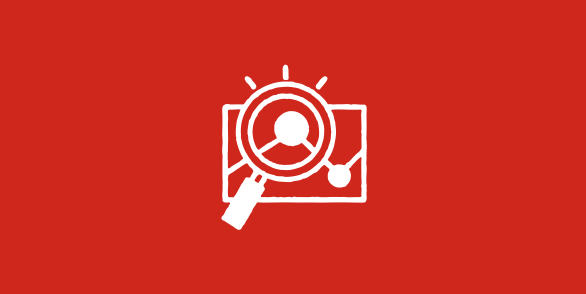When employees unexpectedly call out of work or take planned leaves of absence for extended periods, it can impact their employer in many ways. Productivity, customer service and workplace safety may all be affected. Although absenteeism can’t be eliminated since employees may have a legal right to leave, it can be managed effectively with the right solutions.
Table of Contents
What is absence management?
Absence management is a strategic approach to how an employer manages unplanned and planned employee absenteeism — to avoid disruption in the workplace and maximize productivity. As part of this process, employers have to create policies and action plans to monitor unplanned leaves and discipline employees whose absences may be questionable or excessive.
Policies and procedures for managing employee absences
Managing absenteeism begins with setting employee attendance expectations in an official company policy. Such guidelines should comply with federal, provincial, territorial, and municipal leave laws, be applied fairly and consistently, and cover why employees may miss work. This includes, but is not limited to:
- Vacation time
- Personal days
- Sick days
- Maternity or parental leave
- Medical leave
- Leave related to critical illness
- Compassionate care leave
- Leave for victims of family violence
- Leave for traditional Aboriginal practices
- Leave for court or jury duty
- Bereavement leave
- Medical leave
- Leave of absence for members of the reserve force
- Short-term disability
- Longer-term disability
Enforcing attendance policies
Attendance policies should be written and communicated to employees to ensure the information is understandable and easily accessible. If employees violate the guidelines despite being notified, tracking the infractions and the disciplinary actions taken to the extent applicable is important.
How to create an absence management policy
Absence management policies vary based on the industry, the jurisdiction and individual business needs. Some basic steps to creating guidelines may help maintain positive attendance and productivity.
- Understand relevant employment laws
The Canadian federal and provincial government have laws governing employee leave, including paid, unpaid and extended leave. Any attendance policies employers create for their business must abide by these regulations or risk penalties. - Quantify absences
Employees need to know precisely when they’re expected to be at work to avoid tardy behaviour. An absence management policy should also include how much time off is available to workers throughout the year. - Choose a method to track absences
Without a method of monitoring employees who miss work or are on leave, employers may experience issues with managing absences efficiently and accurately. Some employers still use spreadsheets or other manual processes, but many today rely on automated solutions to ease administrative burdens. - Define procedures
Who do employees notify when they’re going to be absent and when? How do managers address patterns of unexcused tardy behaviour? What is the process for approving or denying employee time off requests? These are just a few procedural questions that absence management policies may seek to answer.
Best practices for absence management
Employers who manage absenteeism in ways that reduce risk, simplify complexity and improve employee experiences generally follow best practices, such as these:
- Communicate frequently
When workers are informed of absence management policies, employee absences can be managed more effectively. - Provide managerial training
Educating managers on company policy and federal, provincial and municipal regulations can help them address employee leave requests consistently and accurately. - Enhance tracking capabilities
Software or an outsourced HR solution integrated with payroll can make tracking employee leave requests much easier than spreadsheets and other manual processes. - Roll out self-service tools
Empowering employees to apply for leave, view their leave calendar, check job protection and manage their current leave may help support compliance efforts.
What is an absence management report?
Monitoring absence can lessen costs, maximize employee productivity, and improve the overall employee experience. An absence management report aims to answer the following :
- What type of absence is occurring with the employee? Look out for patterns and timing of absences.
- What type of absence is occurring across the department? Look out for patterns within a team. Patterns within a team could indicate workload stress.
- What type of absence is occurring across the organization? Look out for patterns due to a specific kind of illness.
Challenges of absence and leave management
Recordkeeping and workflow management are generally the most challenging tasks associated with employee leaves of absence. For example, to comply with the federal and provincial leave legislation, employers must track eligible employees and monitor both continuous and intermittent leaves.
Another potential pitfall with absence management is presenteeism, which occurs when employees who are not well, come to work anyway. Such a situation can hurt productivity and workplace morale. Good communication is essential so that employees fully understand the company’s leave policies and know when to come to work and when to stay home.
Fortunately for employers, comprehensive absence management technology can overcome many of these challenges.
Absence management software
Given the fast-changing regulatory requirements governing employee leave, absentee management software is a welcome option for many businesses. With an automated solution, employers may be able to:
- View absence and leave histories by employee
- Run reports for FMLA and leave compliance
- Identify patterns of unexcused absences or tardy behaviour
- Compare absentee rates to industry benchmarks
Capabilities such as these that simplify data collection and analysis alleviate burdens on HR resources. As a result, employers can focus more time on proactive strategies to curb absenteeism, like wellness programs, in-house medical services, enhanced communication efforts and more precise workforce planning.
Many of today’s absence management solutions are also cloud-based, which improves accessibility and security. This feature is especially ideal for HR departments operating in hybrid or remote work environments and managing absenteeism from any location.
Frequently asked questions
What is included in absence management?
Absence management policies differ from business to business, but most typically include:
- The types of absences that are permitted, i.e., sick days, personal days, etc.
- The method for requesting time off and the approval process
- Disciplinary actions for frequent unexcused absences or tardiness
- Communication preference and frequency during family or medical leave
What is leave management?
Leave management determines which employees are eligible for medical and other types of leave, tracks their leave balance, and documents all related records. It may be necessary to present these records in a compliance audit or claim.
What practical approaches can be implemented to improve absence management?
Practical approaches such as the following can all help improve absence management:
- Open and supportive communication with employees
- Clear and comprehensive absence policies
- Wellness programs with resources such as physical fitness or mental health support
- Early intervention to address attendance issues
- Return-to-work programs to help employees transition back to work after an extended medical absence
How does effective management influence organizational productivity?
Effective management minimizes disruptions to maintain an engaged and productive workforce. Reducing absenteeism means organizations can operate with a continuous momentum, boosting productivity and success.
What are some strategies to encourage employee attendance?
Employers can foster a positive workplace culture, implement flexible work arrangements, promote physical and mental health well-being, recognize and reward attendance, and provide clear and consistent communication to encourage employee attendance.
What is absence management software?
Absence management software streamlines the process of time and attendance. It allows employers to approve employee absences along with managing team schedules. Organizations can gain peace of mind regarding compliance and boost productivity by automating this process.
Learn More
Whether you have a few employees or thousands, you can benefit from time-saving automation, payroll integration and real-time reporting. With intuitive time and attendance software and best-practice guidance from ADP, you can better manage employee time – and save more of your own.
Talk to us about your absence management challenges, and we’ll walk you through our time and attendance solutions — including how companies like yours use them. Call 866-622-8153 or start a quote to get started.
This guide is intended to be used as a starting point in analyzing absence management and is not a comprehensive resource of requirements. It offers practical information concerning the subject matter and is provided with the understanding that ADP is not rendering legal or tax advice or other professional services.





